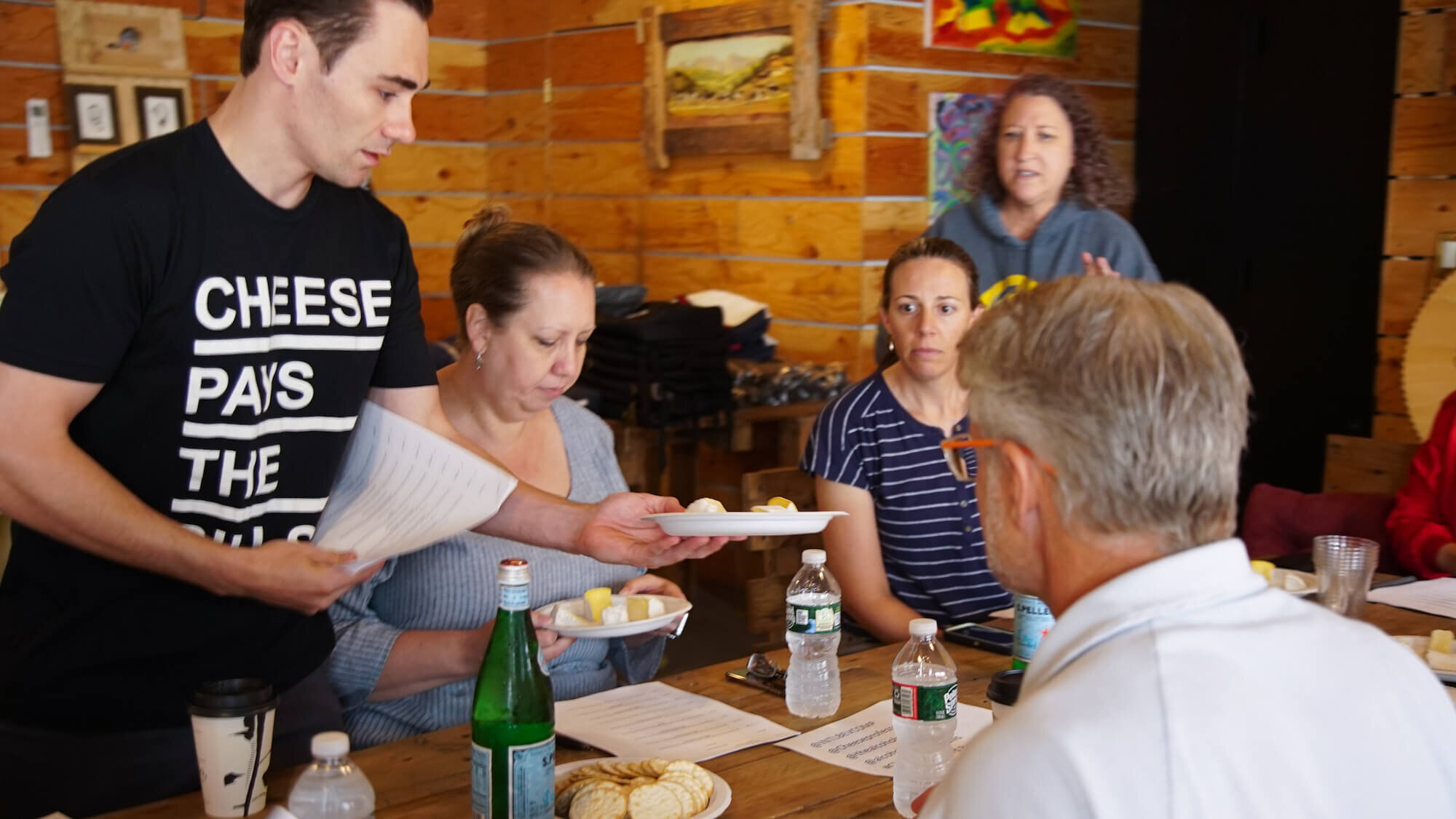Get An Exclusive Insider's Look at the New York International Cheese Competition
Judging the cheese
I’m just back from attending the New York International Cheese Competition and I thought you might want to get a firsthand account of how it went. It was held at Larkin Cold Storage in Long Island City, Queens which is run by third-generation cheesemonger and importer, Adam Moskowitz who is also the founder of the Cheesemonger Invitational.
Sean Hartwig of Zingerman’s
The Judges
There was an incredibly impressive group of 13 judges that included representatives from larger retailers such as Zingerman’s and Murray’s, online organizations such as igourmet, and smaller boutique retailers including Beautiful Rind, Fairfield Greenwich Cheese Co, and Campbell & Co. The competition focused on artisanal and farmstead cheese, and there was an incredible array from all over the world.
Adam Levy greets the judges
The Mechanics of Judging
This was the first cheese competition masterminded by the Cheese Professor founder, Adam Levy, who started the day by explaining how this competition is different from other cheese competitions and soliciting feedback from the judges about the process. Like the other competitions hosted by the International Beverage Competitions Group, what sets the competition apart from others is it is judged by a trade-only blind panel that evaluates the products by their category and actual retail price per pound. By limiting judges to importers, distributors, cheesemongers, and retailers the results better reflect what the consumer wants. Since price is a large part of a consumer’s decision-making process, it is crucial to include in the judging process.
Preparing the Cheese
All the cheese arrived at the cold storage facility, and it had to be coded so it could be judged blind and cut and served at the proper temperature. Speaking of proper temperature, I helped to unpack and organize the cheese for the competition and that warehouse was cold! How cold? Adam will tell you. Temperatures in cold storage are often around 40 degrees. Fortunately, we had the professional staff at the warehouse to do the cheese cutting and plating. Taking the cheese out of cold storage, cutting it, and bringing it to the right temperature for tasting requires a lot of organization and space. We took the cheeses from cold storage to tables where we coded plates and organized them in the order in which they would be tasted. We took batches of the cheese into a prep kitchen where they were cut and plated and finally the plates were taken to the judges.
Judges receiving their samples
Judging
Our judges got selections of cheese that had around 4-6 types of cheese at a time that they tasted, discussed, and evaluated with their colleagues. They decided if the cheese was worthy of buying (Bronze) something that they would carry (Silver) or truly outstanding (Gold) If all the judges agreed on the “truly outstanding” rating, the cheese would be awarded Double Gold. All the judging was done as a team and they considered many factors including taste, look and even the potential for merchandizing.
Judges inspecting the winning cheeses
The judges got a break in the middle of the day for lunch and the day ended with a cocktail hour where they could see and try the winning cheeses. The initial feedback was very positive, and we look forward to sharing the results and details of the next competition in 2022!






